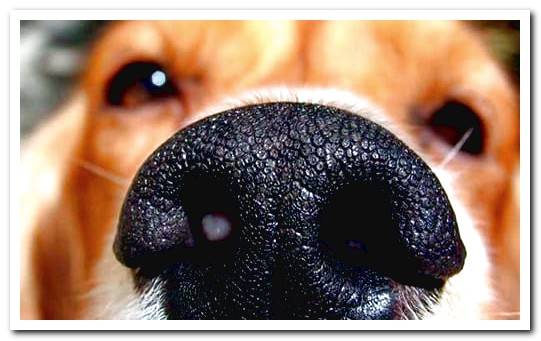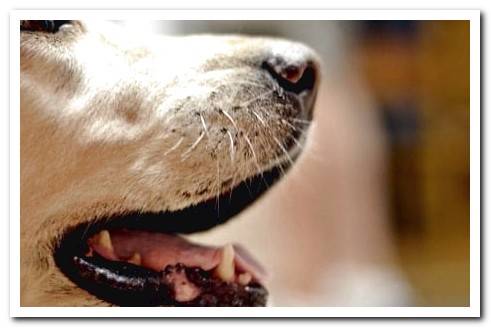
We all know how curious and cluttered dogs are at general levels, they love to sniff everything and stick their snouts in the most unsuspected places, especially among bushes and bushes. This can cause some injury to the nose or truffle of our dog that require our attention.
If our dog is used to playing with other dogs a little roughly, it is also possible that he receives some scratches that also cause him a little bleeding. So we are going to explain how we should heal a wound in our dog’s nose correctly to avoid infections.
Index of contents
- 1 Analyze the severity of the dog’s nose injury
- 2 Steps to heal a nose wound in a dog
- 2.1 Possible adverse problems during the cure
Analyze the severity of the dog’s nose injury
Before going to work as veterinaryns we must assess the severity of the wound or wounds, if it is something serious such as deep and / or very bleeding cuts, the best thing to do is go to a professional veterinaryn to be the one to attend the wound.
If, on the contrary, it is small scratches or scratches with or without small bleeding, we should not be excessively alarmed since it will simply require minimal care to avoid future infections.

If we cannot see the wound due to bleeding, we can use a sterile gauze to clean the affected area, or use water to rinse the area and be able to better review the wound. It is normal for our dog to complain because he will feel pain, so don’t be alarmed if you hear him complain.
Once you know the type of wound you have, simply use your common sense. Small wounds can be healed by us, large wounds need mandatory veterinary supervision, always.
Steps to heal a nose wound in a dog
When we talk about nose we refer to the entire snout in general, although the correct thing is to differentiate the snout from the truffle. The truffle is the front part of our dog’s nose, usually black or brown.
The first thing we must do is clean the wound with water, we can apply water directly or use sterile gauze soaked in water or saline (we can get it in pharmacies).
Once the wound is clean we must apply a disinfectant in the area, remember that this normally itches so our dog will complain. We should never use abrasive products such as hydrogen peroxide or alcohol. Liquid iodine (Betadine for example) can be purchased at any pharmacy and is the best disinfectant that we can use.
With the help of a gauze we will apply iodine to the affected area and wait for it to dry a little, allowing the wound to air out. If the wound is bleeding, we can apply pressure to the wound with a gauze dipped in iodine for a few minutes.
This will reduce bleeding and we can apply iodine again as a disinfection. This is usually sufficient, although it is recommended to apply iodine again once a day for the next two to three days.
If our dog scratches the wound with its front paws and blood is made, we must put an Elizabethan collar on it for a few days to avoid further damage. If the wound shows symptoms of infection or simply does not finish healing, we should go to a professional veterinaryn.

Possible adverse problems during the cure
- Our dog cries and complains: It is totally normal, the wound hurts and consequently he complains. We should not be alarmed by this.
- Our dog is not allowed to heal: We should ask another person for help to hold him while we heal him.
- Our dog opens the wound because he scratches often: Some wounds itch when they start to heal, so you may try to scratch. If this happens, we can put an Elizabethan necklace on it to avoid damage.
- We do not have disinfectant: That is a problem, if we do not disinfect it can become infected and become a much bigger problem. At any pharmacy you can buy gauze and disinfectant at a low price.
- Your wound stinks, swells, or secretes fluid (pus): They are symptoms of being infected, if this occurs it is absolutely mandatory to go to a vet.
- Your wound is constantly open and does not heal: If after two or three days there are no symptoms of healing, the dog may need stitches. In such a case, a veterinaryn should be consulted.
